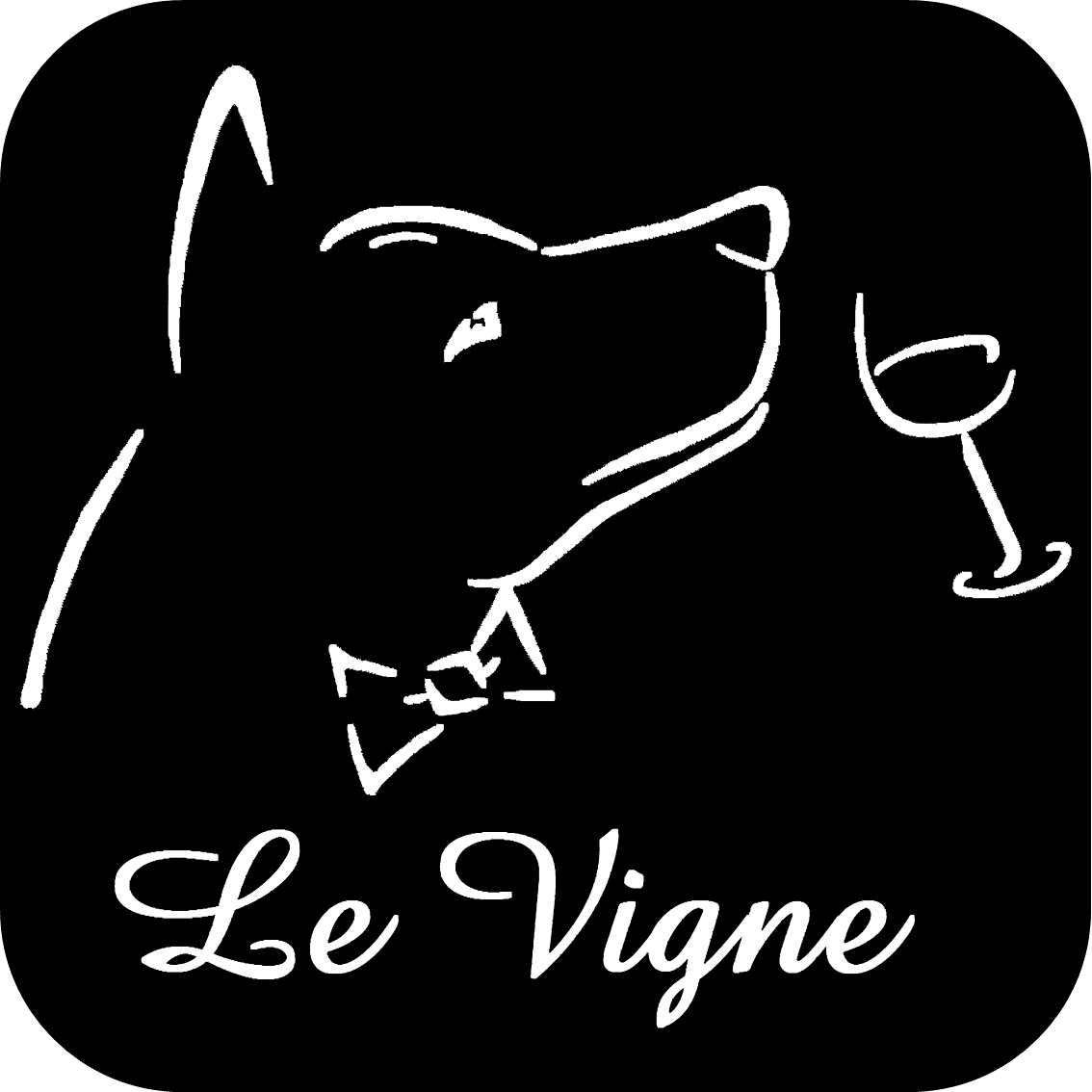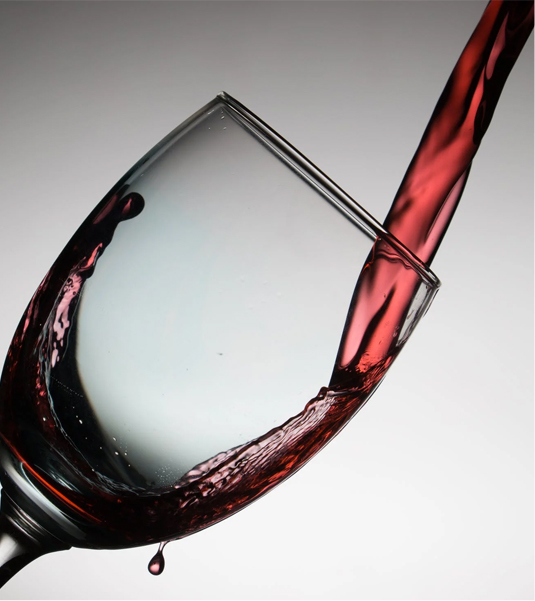 +0
+0
WHETHER YOU’RE A BEGINNER OR AN ENTHUSIAST
Good things are even better when shared! Find out what interesting wines, whiskies and other spirits we’ve been enjoying.
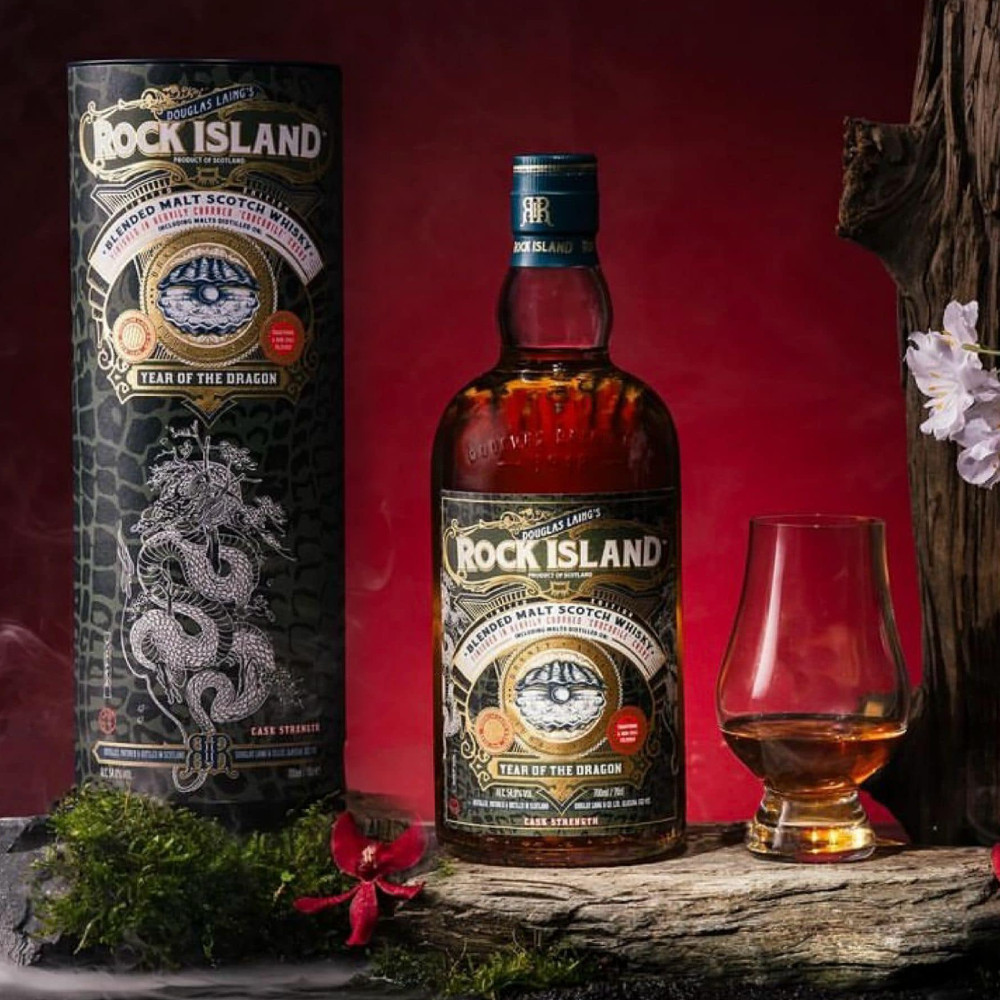
ROCK ISLAND YEAR OF THE DRAGON
Natural Cask Strength 54.8% ABV
Not chill filtered, Not Coloured
A special marriage of Single Malts from Orkney, Arran, Jura & Islay. Finished in heavily charred “crocodile” casks to embellish the already complex marriage of malts with layers upon layers of rich vanillin oak flavours.
Nose: Ashy bonfire embers, grilled pineapple & soft peat smoke with sweet candy & honey. Whiffs of leather and tobacco.
Palate: Waves of sea-salt & complexed layers of caramelised palm sugar, ripe rock melons, red & dark berries, bubble-gum & BBQ’d ripe bananas.
Finish: Sweet toffee, berry fruits lingering with vanillin oak. Clean yet long and sustained pleasant aftertaste.
4th January 2024
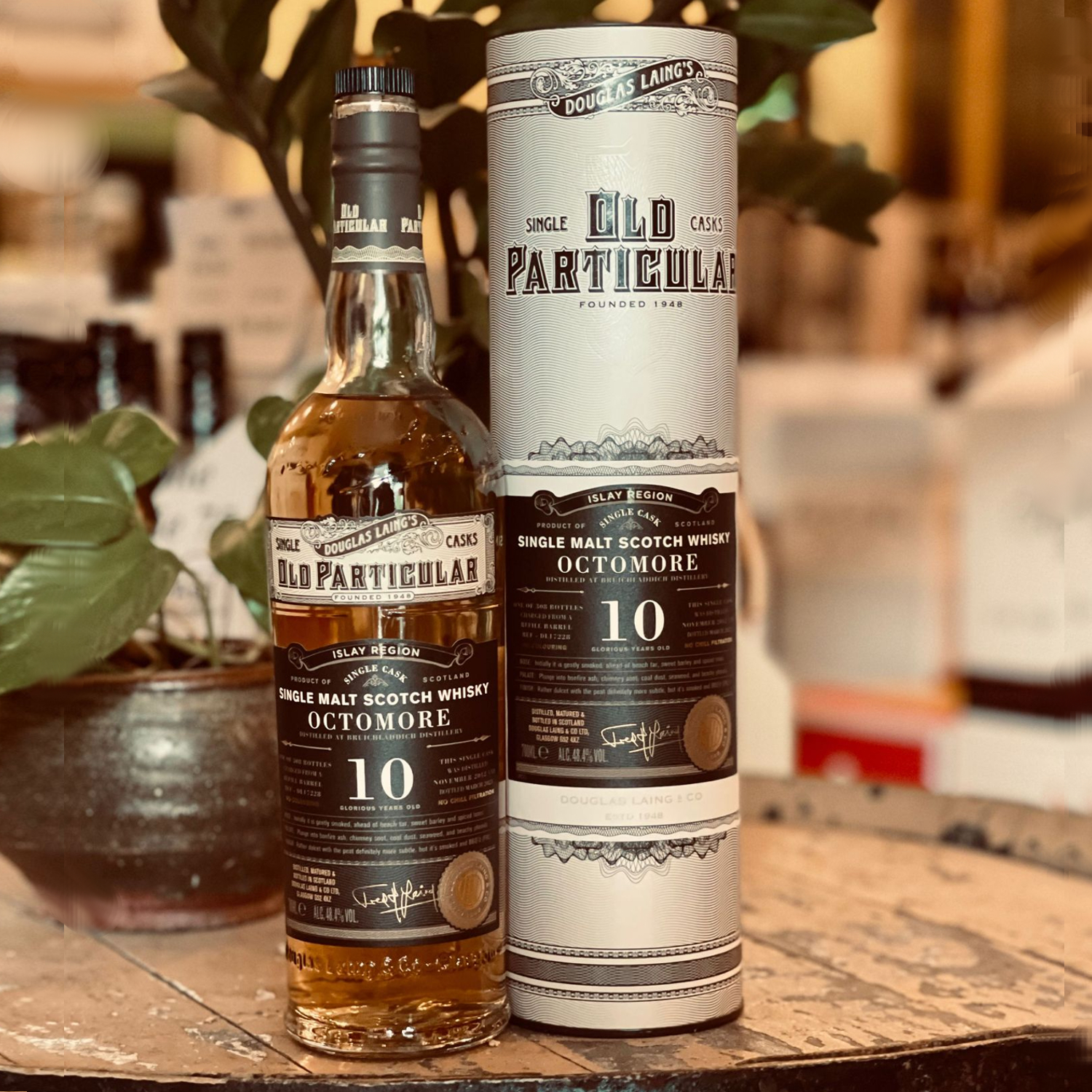
OLD PARTICULAR OCTOMORE 10 YEARS
Single Cask Single Malt by Douglas Laing
Distilled November 2012 & Bottled March 2023
308 bottles at 48.4% ABV produced from a Bourbon barrel.
Ref: DL 17228. Not chill filtered, Not coloured.
Nose: Soft sweet peat smoke with whiffs of dried fruit and light fresh spices.
Palate: Honey tones straight upfront balanced with a rounded orange tang and slightly ashy.
Finish: A subtle combination of flavours of both the nose and palate but one that is quite long.
Other Comments: One of only a few Octomore IBs. OBs are usually bottled at 5 Years to keep the richness of the phenols compact and tight. As phenols soften with age, this 10 year old Octomore is a more refined and subtle version that even those relatively new to peated whiskies may find approachable.
Fun Fact on Octomore – One of three single malt labels of the Bruichladdich Distillery on the island of Islay. Single malts under the Bruichladdich label are un-peated, whilst Port Charlotte is peated and Octomore currently reigns as the most peated whisky in the world. The distillery also produces a dry gin ‘The Botanist’.
Founded: 1881
Current Owner: Remy Cointreau
Wash Stills: 2
Spirit Stills: 2 Lomond Still: 1 (used for gin production)
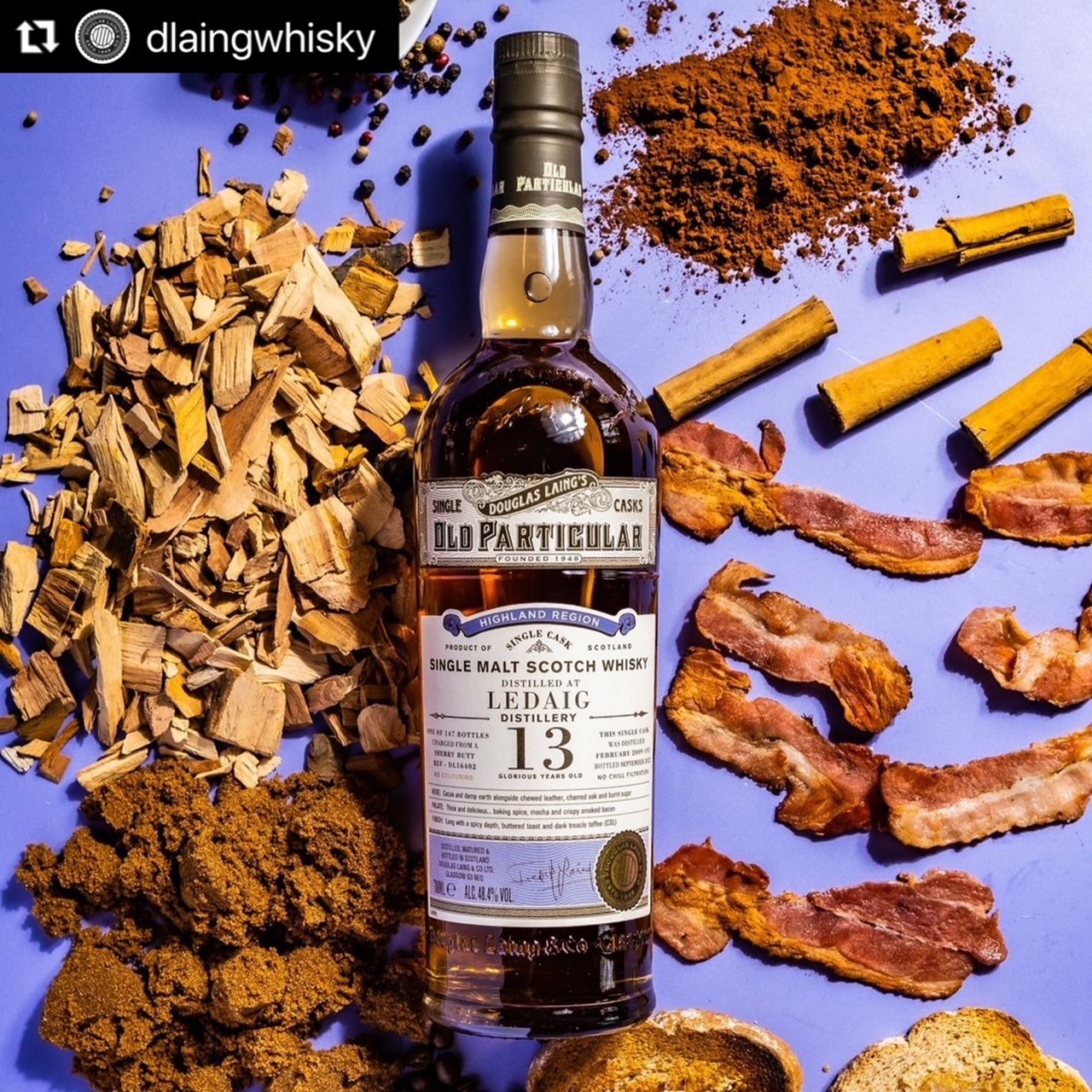
OLD PARTICULAR LEDAIG 13 YEARS
Single Cask Single Malt by Douglas Laing
Distilled February 2009 & Bottled September 2022.
147 bottles at 48.4% ABV produced from a Sherry butt.
Ref: DL 16402. Not chill filtered, Not Coloured.
Nose: Freshly started bonfire mixed in with smoked bacon lifted with the sweetness of caramelised raw sugar in butter.
Palate: Rock sugar sweetness quickly leading to gentle spices. Rich toffee, bacon fat and thick coffee.
Finish: Still rich. Buttery, mouth filling with hints of burnt toast and sweet caramel that lingers on and on.
Other comments: Thankfully NOT a sherry bomb. Obviously from a quality cask that delivered lots of flavour and balance for such a rich and full whisky.
Fun Fact on Ledaig – From one of the two labels of the Tobermory Distillery on the island of Mull. The brands being Tobermory which is ‘apparently’ totally un-peated and Ledaig being given a healthy dose of peat. Incidentally, the distillery was originally named Ledaig when peat was used exclusively to dry the malted barley. A distillery that should be in the same league as Islay distilleries as they produce exceptional whiskies.
15th June 2023
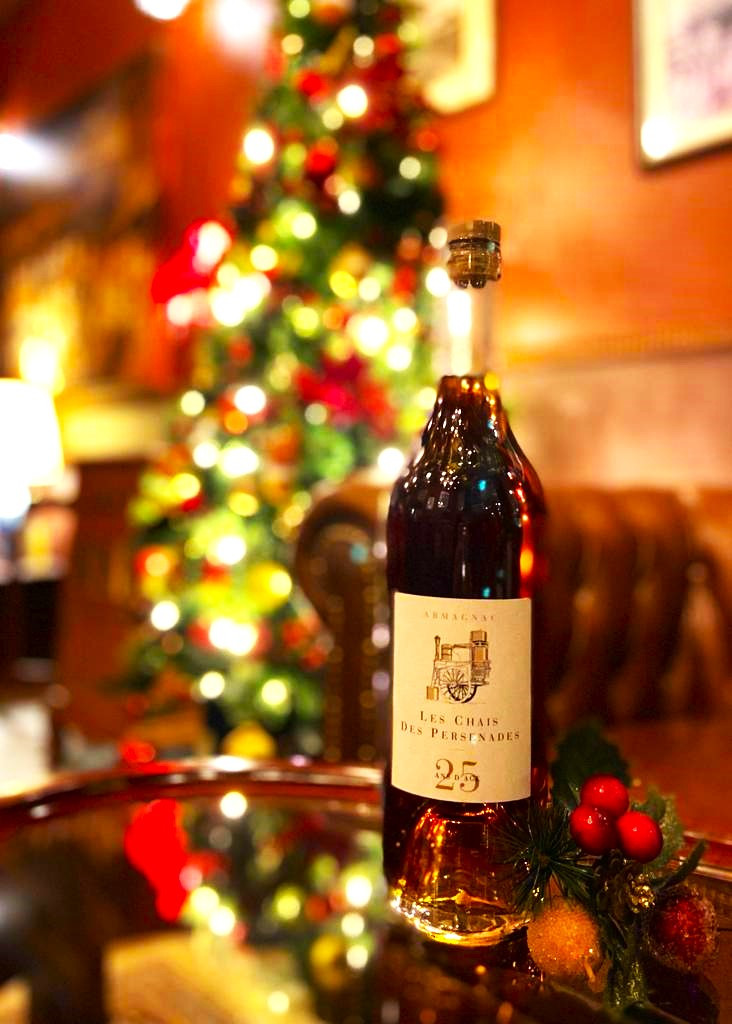
LES CHAIS DE PERSENADES 25 YEARS
Celebrate the festive season with a glass of Armagnac Les Chais Des Persenades 25 years from Gascony, France.
Bottled at the Estate. 40% Ugni-Blanc & 60% Colombard
Colour : Light mahogany
Nose : Candied orange, menthol, soft toasted oak and fruitcake.
Mouth : Rich and mouth filling with deep dark fruit flavours, cocoa and hints of sweeter red berries. Complex with a long finish.
Merry Christmas one and all!
23rd December 2023
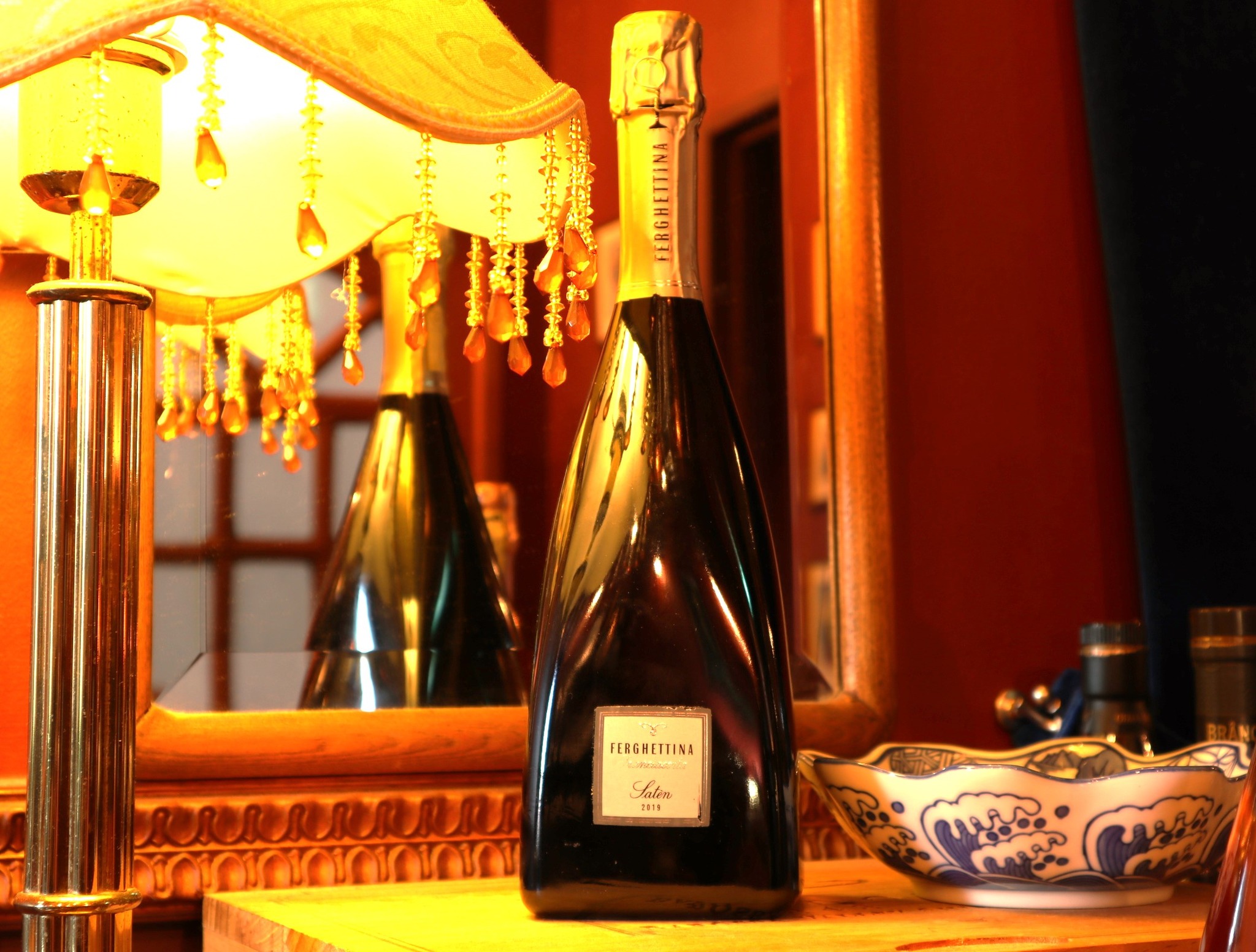
FERGHETTINA FRANCIACORTA
Franciacorta – Italy’s robust challenge to France’s Champagne.
A Method Traditional sparkling wine named after a territory in the province of Brescia, Lombardy Italy. The use of the square bottles is totally unique to FERGHETTINA and is trademarked. The difference in quality is achieved from the flat sides which amplify the effect of sur lie (on lees) aging by having a more equal spread of the lees than traditional curved bottles. The greater contact aids a fuller release of flavours for a more bread-like, yeasty, creamy and rounded mouth feel and proven by studies and a thesis when compared with round based bottles.
Ferghettina only uses Pinot Noir and Chardonnay and stands shoulder to shoulder with the top sparklings from anywhere in Europe.
2nd January 2024
